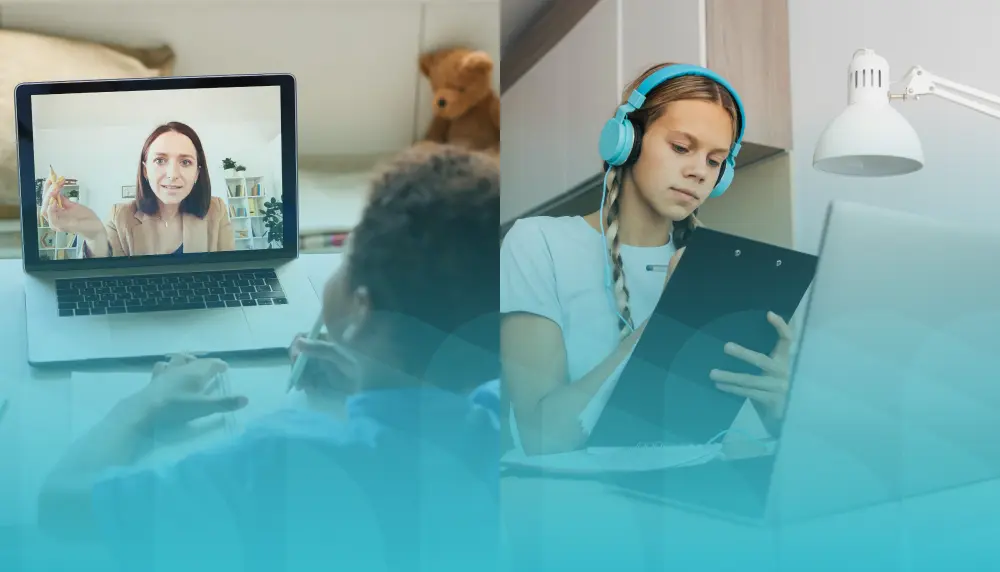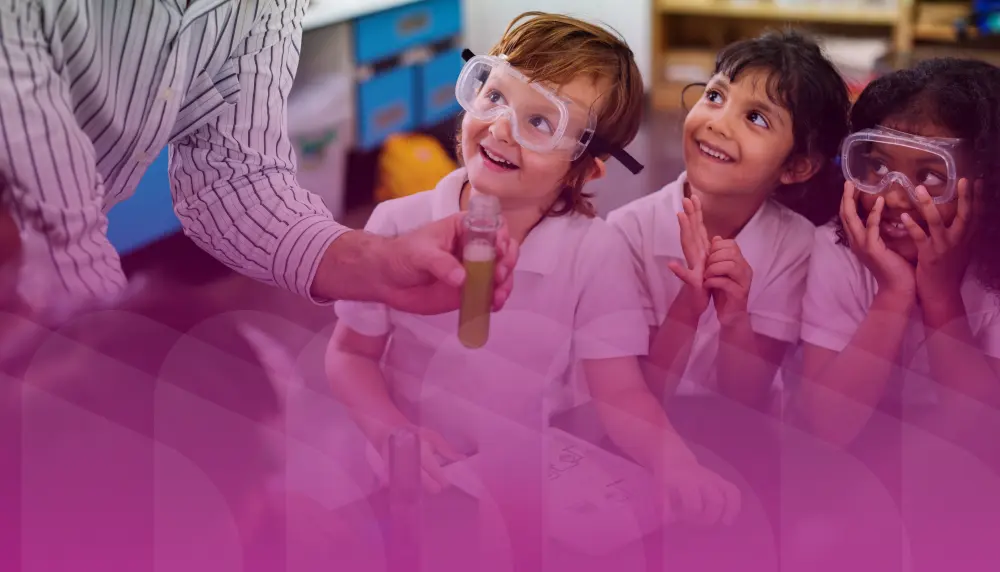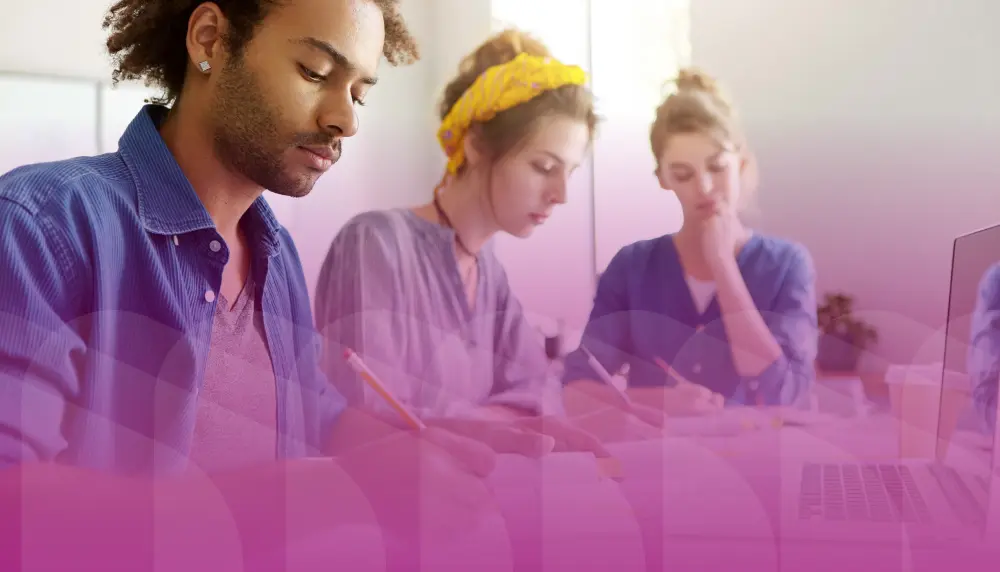
Flipped learning has existed in some form or fashion as long as teaching has — but thanks to serious improvements in technology over recent years, the “flipped classroom” has gone from an instructional edge case to an absolute must-have.
Learn more about the flipped classroom with examples and benefits. We’ll cover:
- What is a flipped classroom?
- 10 ideas to get you flipping
- 5 benefits of the flipped classroom for learners
- 5 benefits of the flipped classroom for educators
What is a flipped classroom?
The flipped classroom refers to an instructional methodology in which learners are introduced to new material outside the classroom and then spend in-class time in activity-based or participatory learning.
The flipped learning approach is not about adding more instructional time or requiring more at-home study from students. Instead it’s about reallocating the existing time in a way that’s more effective for everyone involved.
In order to discover the true power of the flipped classroom, let’s first consider what flipped learning looks like compared to the traditional classroom.
The traditional classroom model

Let’s say 11th graders are learning about electrical circuits. A traditional means of instruction might look something like this:
- The teacher gives a lecture about the components of an electrical circuit, the different types of circuits, and how they work.
- Students take notes during the lecture.
- Students receive a worksheet and some textbook review questions to complete for homework.
In terms of Bloom’s taxonomy, the in-class activities here are devoted to the lower-order skills of understanding and remembering. While these steps are essential to the learning progression, there’s often not enough instructional time available to cover higher-order skills in the classroom as well.
The flipped learning model
Unsurprisingly, the flipped learning model takes all the above-mentioned instructional conventions and gives them a 180-degree spin! Here’s what the exact same lesson might look like when you flip your classroom:
- The instructor creates instructional videos (or gathers other content, like readings, or audio files) to introduce electrical circuits.
- Students watch the short videos at home, reviewing as many times as needed to reach understanding.
- In the classroom, students work together to build a simple electrical circuit.
- The teacher rotates between groups to facilitate, support, and pose questions.
In the flipped model, lower-order skills like understanding and remembering are reserved for at-home learning, while classroom time is spent providing active opportunities to apply, analyze, evaluate, and create.
Students are responsible for coming to class prepared with a basic understanding of concepts, and teachers help students play an active role in synthesizing those concepts together in the classroom.
Traditional vs. flipped learning: A quick summary

So what’s the big idea behind the flipped classroom? Alison King said it well: it’s all about shifting the role of the educator from “sage on the stage” to “guide on the side.”
10 ideas to get you flipping
Curious what it might look like to flip your classroom in practice? Here are 10 flipped classroom ideas and activities to get you started. Don’t be afraid to use these for learners of all ages. (Remember that in flipped classrooms they'll have already watched, listened, or read relevant course material in advance; now’s the time to synthesize, evaluate, and create!)
1. Group projects
Assign small groups ahead of time, giving each student a different video to watch before class. In class, each group member is then responsible for explaining their topic to the group and integrating it into the final group project — whether that’s a report, presentation, poster, video, etc.
2. Hands-on learning
From lab experiments to arts and crafts, help students “learn by doing.” Assign videos to prepare students for the in-class task, and then give them free rein to create!
For the most effective experiential learning, the focus should be on the process more than the end result. Encourage students to make mistakes (safely), question the process, and try out new methods.
3. Comprehension checks
Wondering whether students have watched the pre-class lecture or other materials? Start your in-class activities with a quick poll! Use an online audience response system so that students can answer in real time, giving you an instant gauge of comprehension.
If you notice a certain topic needs reinforcement, ask a student to teach it to the class (an additional micro-flip!).
4. Peer review
No matter the subject area, constructive feedback is an important skill for students to develop. Have them watch videos at home on how to evaluate work and give feedback, and then use in-class time to practice peer assessment in pairs or groups.
Is the class you're flipping fully asynchronous and remote? This can still work! Just use peer review tools that offer online options like student forums or time-stamped discussion threads.
5. Paired problem solving
After watching videos explaining a concept, divide students into pairs and give each student a different problem related to the course material. Have the students take turns solving their problems, explaining their thought process and logic to their partner.
As a reinforcement assignment, have each partner create their own problem for the other to solve!
6. Structured discussions
Have students watch the same video(s) before their in-class session, and then use the class time to facilitate discussion in any form:
- Role playing
- Small group huddles
- Open-floor discussions
- Paired interviews
- Fishbowl discussions
- Debates

7. Independent work
Not all flipped classroom activities have to be done collaboratively. Take the assignment you would have given for homework and give students time in class to work independently.
To make this activity most effective, focus on higher-order tasks where students are actively processing and synthesizing ideas. Maybe they're making concept maps, drawing a graphic, or creating their own assessment questions.
8. Learning stations
Set up three or four stations for students to rotate through, each focusing on a different category of Bloom’s taxonomy.
For instance, maybe the first station simply allows students to re-watch one of their pre-class videos. Then the second station is a quick think-pair-share activity with a partner, and the third station is a “recording studio” where students can reflect on the material by recording some quick audio.
9. Teach the class
Flip classroom roles entirely by having students take turns being the teacher for a day!
Give students different videos to watch before class, making each student responsible for a different aspect of the current course material. Then have students give a brief presentation live or allow them to showcase a recorded presentation instead.
10. Multimedia creation
Videos aren’t just the primary tool for content delivery in a flipped classroom — they’re perfect for a wide variety of in-class activities, too. For example, during class, you could have students:
- Work in the computer lab to edit videos
- Film creative footage at a green screen station
- Outline and/or draft scripts for videos
- Interview each other
- Present their videos and answer class questions
These ideas are great for adding or expanding the flipped approach to your classroom. Next, let’s take a look at the many benefits offered to both students and educators.
5 benefits of the flipped classroom for learners
Flipped learning has become mainstream for good reason. This instructional methodology has loads of benefits for learners of all ages.
1. More active learning
In a traditional classroom environment where teachers are presenting information from the front, even the most interested students inevitably become passive observers. By replacing teacher talk time with learner-led active learning strategies, deeper learning is a guarantee.
2. More peer interaction
Peer interaction is at the heart of many flipped classroom activities. Group work gives students the opportunity to develop social-emotional learning (SEL) skills, and the instructor is there to help projects run smoothly and facilitate productive collaboration.
Through peer review and peer-to-peer teaching, students are able to learn from each other as much as from the textbook or the teacher.
3. More real-time feedback
How many times have you sat through a great presentation — one that sparked several intriguing questions — only to run out of time to ask them? That’s what happens in so many traditional classrooms!
With limited time to get through a large amount of material, teachers aren’t able to speak to all students’ needs, especially those wrestling with more fundamental or complex questions. Flipped classrooms allow students to develop these questions and demonstrate their skills on their time and then use in-class hours for discussion and clarification.

4. More individualized learning
The flipped classroom approach is a natural support for differentiated learning. Why? Because learners have much more flexibility to learn according to their own preferences and needs.
Especially when pre-class materials are delivered by video playlist, learners can:
- Self-pace their learning
- Rewatch lecture videos as many times as needed for knowledge retention
- Jump through course materials however they prefer
- Pause lectures to do their own research or take notes
- View video subtitles if they prefer text-based learning
5. More engaged students
…and we’re not just talking about student engagement in the traditional class period! When you use video as your primary means of course content delivery, you’re working in a medium that students of all ages know and love.
They’re already making short videos on TikTok, watching YouTube, and scrolling through Instagram Reels — you’re just redirecting that energy toward high-quality educational content.
5 benefits of the flipped classroom for educators
So it’s clear that flipping the classroom can have some major benefits for the learners…but what about the educators? As it turns out, there’s plenty of goodness to go around when you flip the experience!
1. More meaningful time with students
When instructors aren’t spending all of their classroom time delivering lessons, they’re free to dedicate that time to more impactful interactions. These could be:
- One-on-one student check-ins
- Supervised group activities
- Guided practice or application
- Individualized real-time feedback sessions
- Open Q&As with the class
Or…all of the above! The beauty of flipping a classroom is that teachers have the autonomy to use the synchronous time however they need to.

2. More instructional flexibility
Flipping may seem simple in a traditional brick-and-mortar classroom setting, but what happens when you’ve got remote classes? Or hybrid/blended learning classes? Or fully asynchronous learning?
Fortunately, the flipped classroom works equally well for all classroom models. The same principles — introducing concepts independently via video and then collaborating together — even work when you’re engaging students 100% online.
Just take the in-person class activities and adapt them to video conferencing (e.g. breakout zoom rooms), or use online tools like audience response systems to keep that sense of interaction going.
3. Easier for absentees
When core concepts are conveyed outside of the classroom, it’s easier for students to stay up to speed when they’re sick or otherwise absent. They can just watch the flipped classroom videos!
Same goes for absent teachers — a substitute no longer has to be responsible for delivering the lesson and can instead step in as that “guide on the side" for active learning.
4. Scales more easily than traditional lessons
For districts dealing with growing student populations, the flipped classroom model is a great way to maximize overstretched and always-limited resources.
Because course content is pre-recorded, the same instructional materials can be scaled to reach any number of learners. It’s no harder or more resource-heavy to teach a lesson to 100 students as it is to 10. Instructors can also share their video libraries with one another to reduce duplicate work!
5. Less educator burnout
With flipped classroom videos, lesson delivery is more streamlined, students are more actively engaged, higher-level skills are easier to assess, and there’s more flexibility built into increasingly packed curricula. All of which can in turn contribute to less teacher burnout — something educators, parents, and administrators will certainly appreciate!
With flipped learning, educators can do everything they need to facilitate this highly effective instructional model, from creating their own videos to assembling asynchronous course playlists to embedding formative assessments into multimedia content.
Students and administrators can join in, too, with benefits like learner-made video content and video-based professional development. Yes, interactive video forms the heart of the flipped classroom, but it does so much more.
As we wrap up our look at flipped learning, it's clear that this approach is more than a method; it's a movement towards a more engaged, personalized, and effective educational experience. The flipping strategies provided are your toolkit for implementing, and the benefits for learners and educators are just the tip of the iceberg.
Flipped learning isn't just about changing where and when learning happens; it's about revolutionizing how we think about education itself. The flipped classroom model offers a promising future where education is not just a transfer of information with the sage on the stage, but a shared journey of discovery and growth with the educator as the guide on the side. Embrace the flip, and let's redefine the possibilities of education.


